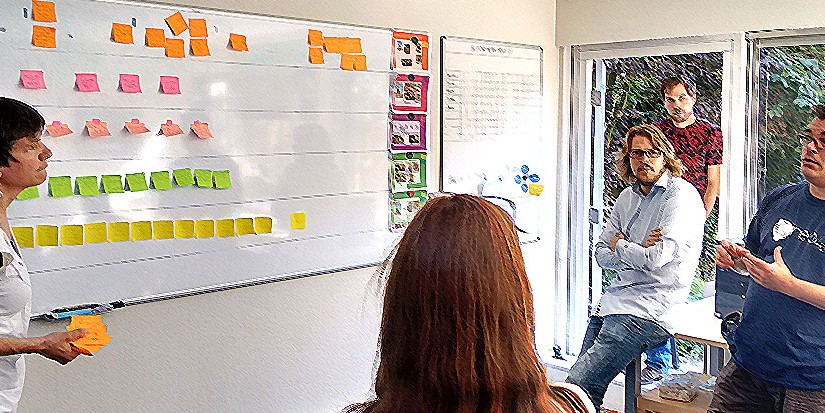Hello again,
Welcome to the second blog about online tools for teaching and learning history. This blog will take a look at the process that took place before the start of this blog series and might be of particular interest to both teacher trainers and students who are learning to become history educators, as well as teachers.
When deciding to work with online tools there are a couple of difficulties every educator encounters. The first one being the large amount of online tools available in relation to the (sometimes questionable) quality of all these tools, the second one being the familiarity of teachers in general with the effective use of online tools. So let’s go into a little more detail on those issues.
The internet is a big place. A very big place, in fact. I mean to say that there are loads and loads of (free) tools available online. The question is: what are the good ones and how does one find them? This blog series hopes to provide some guidance in pointing out the tools that might come in handy in your history class. Actually finding a certain amount of those tools in the first place was a challenge: it was like looking for a needle in a haystack. So that is why we from the Online Learning Team decided to ‘cheat’ a little bit. In my job as a teacher trainer I had the luxury of having certain assets at my disposal to do a larger search on the internet. Well… by assets I mean my students, all history teachers in the making, who I instructed to have a look for useful online tools, as part of a training exercise. This provided me with a list and short descriptions of about fifty different tools. The idea behind this exercise was not to selfishly use my student’s work and pass it off as our own, but to give them a little insight into both the work that is being done on this by international organisations like Euroclio, as well as letting them develop a critical view of online learning resources.
That brings us to the second issue with online tools: let’s be honest here, most of us are not very well equipped to work with digital tools. Most of the teacher training institutes don’t cover digital didactics extensively in their curriculum (or have not done so in the past), so what the average teachers know about digital didactics usually comes from his or her own initiatives and ‘learning by doing’ in his or her own school practice. This is of course an issue should be addressed by teachers and teacher trainers alike and one ‘exercise’ done for Historiana certainly isn’t going to fill in the gap for my students, but I tried to at least put them into a certain mindset to use when looking at digital tools. For the exercise my students were given three criteria for looking at and screening online tools.
The first one was the basic functionality of the tool: how easy is it to use the tool? Are there any glitches or errors or other things that disqualify the value of the tool for use in class?
The second one was the question of how this specific tool could be used to improve the historical thinking of the pupils (in secondary education). Now there are several models on historical thinking (or historical reasoning), but most of them include the same aspects, such as using sources, contextualising and historical meta-concepts such as causality and continuity & change. If the tool provides help with any of these aspects it might qualify as worth having a look at.
The third criterium is the most important one: what is the added learning value of the digital tool over non-digital learning? This brings us back to the previous blog which referred to the OECD-report on computerised learning. One of the outcomes was that the results were not always better when using digital learning materials. In the end it is sometimes preferable to have some ‘old school’ non-digital learning in your classes, even in spite of what some school managers say (iPad classes anyone?). Remember: digital tools are a means to an end, not an end in itself. That means that there is no ‘Golden Standard’ for digital materials in education and that there is no digital method out there that will completely replace you as a teacher. It is up to you how to make the best use of digital tools in your classroom.
On a personal note: I am quite positive that blended learning, and incorporating digital tools in education, might very well be the future. As I teach in my didactics courses as a teacher trainer, variety is the spice of life! Adding digital tools to our ‘personal teacher’s toolkit’ is not something we should refrain from. That means that we teachers should keep experimenting with these types of tools and that we, as a learning community, should share our experiences.
Now addressing teacher trainers and teacher training institutes directly, see this blog as a wake-up call and put digital didactics, preferably specific digital history didactics in a significant way into your curriculum(!) And even better, why not provide some good practice and incorporate them in your other courses as well?
For these blogs I hope my students (thank you history cohort 2014 of the Fontys University of Applied Sciences in Tilburg, the Netherlands) were able to scoop out some valuable needles from the online haystack. The Historiana Team went through all the tools my students checked and selected what were, in our opinion, the most ‘promising’ and relevant ones. The following blogs will be all about these tools.
Meanwhile I set sail for the Caribbean, so my Historiana colleagues will take over the blog. Again I hope it will provide you with some useful insights and inspiration for your own classroom.
Kind regards,
Pascal Tak
